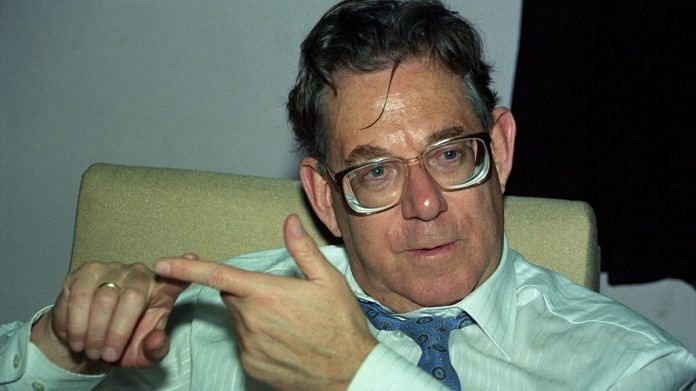New York: The Earth has dozens of names in dozens of languages, but the human-dominated moment in the planet’s history that we find ourselves in has been named only once: the Anthropocene. The man most responsible for that moniker, Nobel Prize-winning chemist Paul Crutzen, died on Thursday at 87.
Crutzen discovered in 1970 that nitrogen pollution was capable of destroying ozone in the atmosphere, a critical layer of that protects living things from the sun’s ultraviolet radiation. The implications were potentially dangerous, as this ozone gas thinned into a “hole” above the Southern Hemisphere that threatened to leave millions of people exposed. Crutzen shared the 1995 Nobel Prize in Chemistry for discovering the risk to the ozone layer.
“He was a great example to all scientists, because he was not afraid to point out the moral implications of the changes that humans are causing to the atmosphere,” said James Hansen, the former NASA scientist known for his early public warnings about global warming. “And he was unafraid to criticize government actions and policies.”
Crutzen’s science clearly drove political action. A 1987 treaty, known as the Montreal Protocol, led to a worldwide phase-out of ozone-eating chemicals, including the chlorofluorocarbons used in refrigeration and other applications. That landmark success—in which scientific insight leads to diplomacy and cooperation, restoring the atmosphere and protecting human life—is often held out as a model for the international effort to reverse the far graver consequences of greenhouse gasses. Swift global action has led to dramatic improvement to the ozone layer.
“He was unafraid to cross the activism barrier many scientists retreat from, knowing it comes with accolades and attacks,” said Andrew Revkin, founding director of Columbia University’s Initiative on Communication and Sustainability. Revkin had worked as a journalist with Crutzen as far back as 1984, when the Dutch scientist was researching the global “winter” that would come after a nuclear war.
‘He was not afraid to point out the moral implications of the changes that humans are causing to the atmosphere’
Crutzen “is easily one of the, if not the, most creative and original of all geoscientists,” said V. Ram Ramanathan, a climate scientist at the Scripps Institution of Oceanography who worked closely with Crutzen since 1978. Their research resulted in discoveries including what Ramanathan calls “atmospheric brown clouds” of air pollution over southern Asia.
“What I liked most about Paul is that he was both a genius and a genial human being,” Ramanathan said. “He had a great sense of humor and enjoyed life.”
The term Anthropocene, which Crutzen helped coin and popularize, follows in the tradition of naming geologic time spans. The end of the last ice age 12,000 years ago gave rise to what geologists call the Holocene Epoch, and with it the conditions that allowed permanent agriculture and human settlements to exist. Crutzen had spent the last two decades making the case that global greenhouse-gas pollution has brought that period to a close. The next period, the Anthropocene, would be characterized by grave risk to both agriculture and settlements.
In 2000, Crutzen and Eugene Stoermer, the late biologist from the University of Michigan, published what would become an iconic essay that used the term as its title. The scientists argued that humanity’s effect on the world by the late 18th century that the entire planet essentially entered a new geological epoch. “That is the period when data retrieved from glacial ice cores show the beginning of a growth in the atmospheric concentrations of several ‘greenhouse gases’” they wrote. “Mankind will remain a major geological force for many millennia, maybe millions of years, to come.”
The day before Crutzen’s death, a team of scientists from the U.S., China, and Taiwan published in the journal Nature a new review of temperatures over the last 12,000 years. They concluded that the Earth is hotter today than it has been at any point in the Holocene. Geologists are expected to vote later this year on formally adopting the name Anthropocene Epoch.
Crutzen “hoped the Anthropocene designation would be a warning to the world,” Revkin said. “But he was also unafraid to smile and relish the task he took on.” –Bloomberg
Also read: How can you stop climate free riders like China? Join the ‘carbon club’



